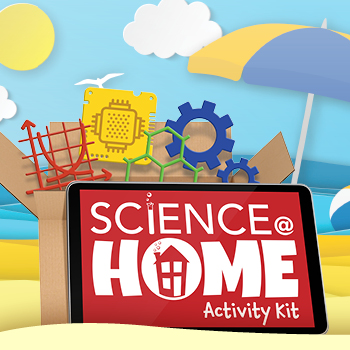Your genome, the set of instructions that makes you who you are, is 99.9% identical to mine, and 99.9% identical to every other human on the planet. Whenever I am feeling untalented, I like to remind myself that David Bowie and I are 99.9% identical. Within that 0.1% genetic difference, we find all of the beautiful variety that makes us unique. There are many facets of diversity within our human family, but ones we especially celebrate during June are sexual orientation and gender identity. In honor of this, I wanted to look at LGBTQ+ representation in the STEM fields, and consider what can be done to better serve us all.
Data shows that people who identify as part of the LGBTQ+ community are represented 20% less in STEM fields than would be expected based on population. In a Report on the LGBT Climate in Physics by the American Physical Society, over one third of LGBTQ+ respondents “considered leaving their workplace or school in the past year” after they experienced or observed harassment or discrimination. Some LGBTQ+ professionals have reported a view that being out is “too personal” and “unprofessional” within their STEM workplace. Another major issue that makes it difficult to measure the impact of LGBTQ+ people in STEM is the lack of data on the representation and treatment of the LGBTQ+ community because of the shortage of studies and initiatives surrounding this often-invisible facet of diversity.
I want to explore some ways that STEM as a whole benefits from being actively more inclusive and open to scientists and other professionals regardless of their sexual orientation or gender identity. Obviously, the paramount reason for working to increase how welcoming and inclusive we are as a field is that every single human being is deserving of dignity, respect, and the right to be exactly who they are. A person’s identity should always be protected, valued, and celebrated. The following points are intended to supplement this, not supersede.
We Need More Scientists
The President’s Council of Advisors on Science and Technology released a report that stated the United States needed to produce about 1 million more college graduates with STEM degrees to maintain a “historic preeminence” in STEM. One way this could be done is by retaining some students who begin on a STEM track and then leave to pursue other paths. One of the main reason given by students who switched out of a STEM major was “an academic culture in STEM fields that is sometimes not welcoming or attuned to members of groups underrepresented in STEM fields.” According to a National School Climate Survey, LGBTQ+ high school seniors are twice as likely to choose a STEM major if their high school science curriculum included positive LGBTQ+ representation. The underrepresentation of LGBTQ+ STEM professionals is not due to the work being too hard or uninteresting; it is a result of a culture that has historically excluded people who are not heterosexual and cisgender. Creating a more welcoming culture in STEM will help retain more people in STEM along with all of the passion, innovation, and creativity they could bring to the table.
Safer Science
Whistleblowers (people who expose illicit or dangerous activity within an organization) have historically been a safeguard against bad science or policy. They protect the public by calling attention to misreported studies in the pharmaceutical industry, energy industry, and many others. Due to marginalization, harassment, and devaluing in the workplace, LGBTQ+ STEM professionals are less likely to feel comfortable enough to report misconduct, cover-ups, or any other dangerous activity. This has potentially disastrous implications on public safety. When all STEM professionals feel welcomed and protected in their workplace, there is a greater likelihood that they will be able to step up and report when needed. This is better for us all.
Science is Unbiased, Scientists Are Not
The process of repeating experiments and peer reviewing results helps to make the scientific method an unbiased way of exploring and defining our world. However, behind this method are scientists – human beings. Humans all carry biases, both conscious and unconscious. These are based on a whole host of things including how we were raised, our experiences, and our personal identity. If all scientists come from similar backgrounds and identities, there is a greater chance they share similar biases. This can lead to experiments that have blind spots or skewed explanations of data. Having a diverse range of STEM professionals, including those within the LGBTQ+ community, means bringing together diverse viewpoints and experiences, which has been shown to lead to less blind spots, less assumptions, and better science.
Groupthink
Studies have shown that a working team with a wide range of diversity is more resistant to “groupthink.” Groupthink is a psychological phenomenon that happens within a group of people who consciously or unconsciously prioritize consensus or conformity over creativity. It happens often in groups of people who share similar experiences and backgrounds. Groupthink feels good in the moment because everyone agrees and is on the same page, but it has a hard time going very far. Diverse working groups are better able to respond to challenges, they produce more innovation, and they are better at information processing. Science is an inherently creative and challenging field – it demands many viewpoints and ideas. Diversity in groups of scientists helps foster the best parts of science leading to ingenious solutions and explanations of our world.
How Do We Get There?
It is not enough to be passively nondiscriminatory; we must be purposefully welcoming and inclusive. Transparency is one of the most effective ways to insure that unconscious discrimination is mitigated. This means transparency in hiring, mentorships, salaries and raises, promotions, and opportunities across the board. Companies need to actively value and celebrate diversity in order to make professionals feel fully welcome to be their whole, authentic self. Healthcare policies can be rewritten to explicitly include coverage for same-sex partners and gender affirming surgeries. Employees can take part in perspective-taking training to increase their awareness and empathy for how other peoples’ experiences in the world can be different from their own.
Diversity is a powerful ally in our quest to understand ourselves and our world. We can do better and we must do better – not just because the field of science will thank us, but because it is a moral imperative to make sure every person is afforded the respect and dignity to be their full self.
But don’t just take it from me. I would like to leave you with some words from Mario Peláez-Fernández, a friend of the Science Center’s and a spotlight in the 2020 Green Gala.

Aoife Ryle is a STEM Educator at the Connecticut Science Center. In addition to working with school groups, she works with our Teen Program, Overnights department, and shoots weekly science segments for WFSB. She has a degree in Bioengineering from the University of Maine and has a personal interest in the life sciences and engineering which makes bioengineering a perfect crossover.



